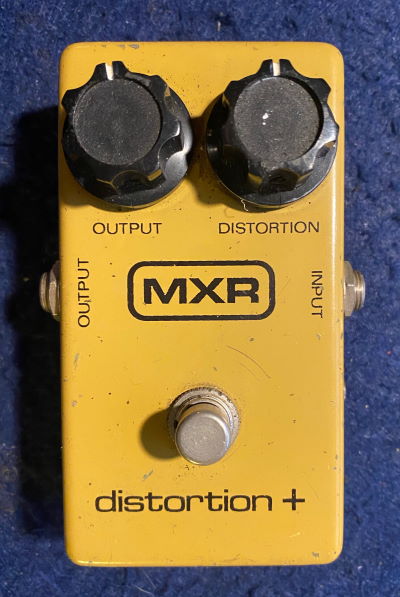

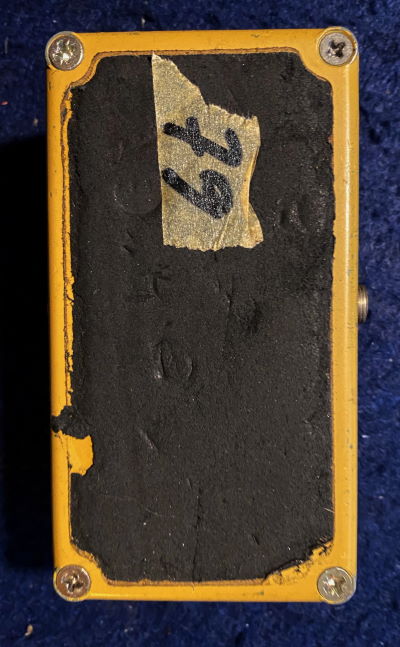
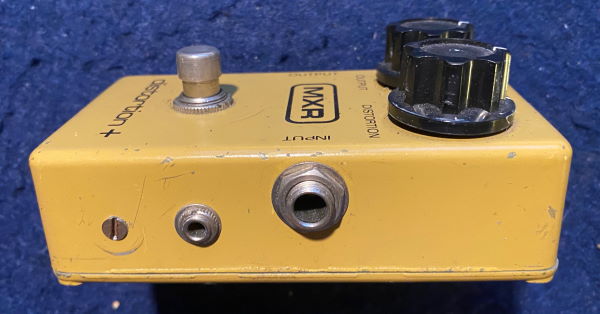
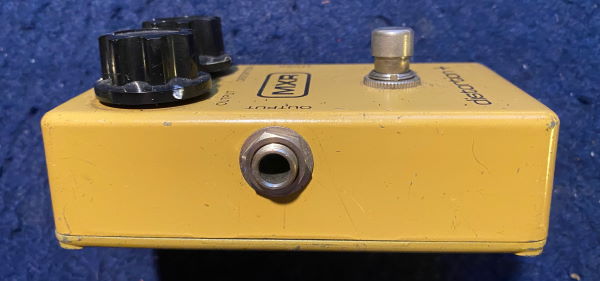
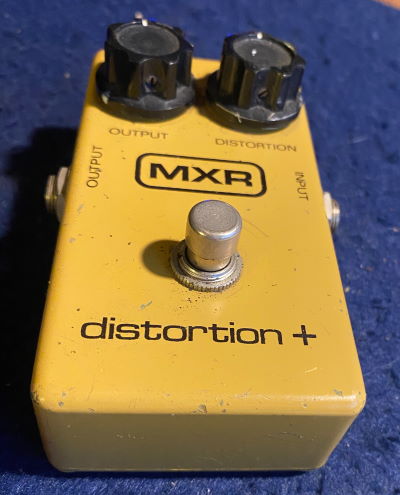
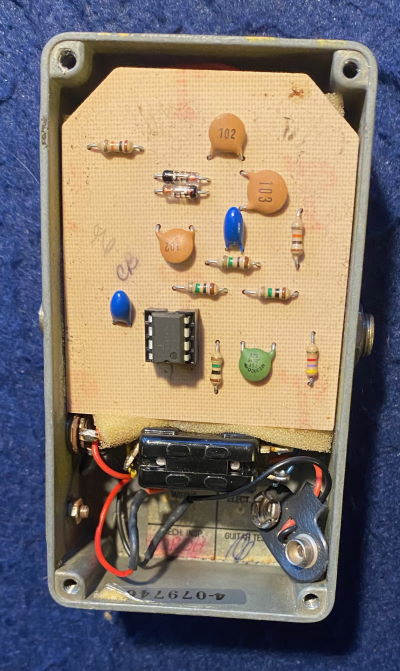
1979 MXR Distortion + Blok logo Vintage Orig. power Jack added Very Good Conditions as you see in photos Code EF19
This is the real deal favored by many including Randy Rhodes
The MXR Distortion+ was
designed by Keith Barr (former President and co-founder of MXR Innovations) in
the early 1970s and it has definitely made it's mark in the history of music
since then, proving its status as one of the great classics in the expansive
distortion world. Great guitar legends like Randy Rhoads (Ozzy Osbourne) and Bob
Mould (H�sker D�/Sugar) have made the Distortion+ part of their trademark guitar
sound and it has found its place on countless recordings throughout its almost
40 years history, musically ranging from mellow pop music to hard rock/heavy
metal.
Slightly deviating from what the name "distortion+" would let you expect, the
sound of the pedal is more an overdrive-type of sound ranging from low-volume
mild distortion, over to a warm, tube-like overdrive, all the way to a crunchy,
pronounced fuzztone with lots of sustain with the controls maxed out. The
versatility of the sound is amazing considering the simplicity of the unit,
producing a variety of sounds suitable for various musical styles from classic
rock to scooped heavy metal.
As for the company behind this pedal, MXR (MXR Innovations) was one of the most
proficient manufacturers in the effects industry in the late 70's and early
80's, playing a central role in creating the industry of electric guitar effects
as we know it today. MXR was the largest US effects company and their original
pedals and rack gear are still highly sought after today, neary 35 years later.
In the mid 80's, despite it's strong market position MXR was hard-pressed due to
the incoming wave of effects from the far east (i.e. Boss and Ibanez), and was
forced to give up the manufacturing of effects pedals in 1984. The same fate
became also Electro Harmonix, who was propably the strongest US rival at that
time. In 1987 the MXR brand was purchased by Jim Dunlop, who started making
reissues of the old line of effects and bringing new effects under the MXR brand
to the market.
Some technical information:
The implementation of the pedal circuitry is rather simple. The pedal uses a
single opamp gain stage with variable negative feedback ("Distortion" pot) to
amplify the signal. A pair of cross-coupled germanium diodes to ground are used
at after the gain stage to clip the signal and thus cause the wanted distortion.
The "Volume" pot is simply a variable resistor at the output of the circuit to
control the output level. The most notable fact is the absence of a "Tone"
control, but extra care has been take in the sizing of the capacitors to voice
the sound, and oftentimes the missing of this control is not even noticed. All
in all a very simple design with minimal amount of components and no discrete
transistors. Turning up the Distortion control increases the amount of
distortion and at the same time cuts some bass from the signal.